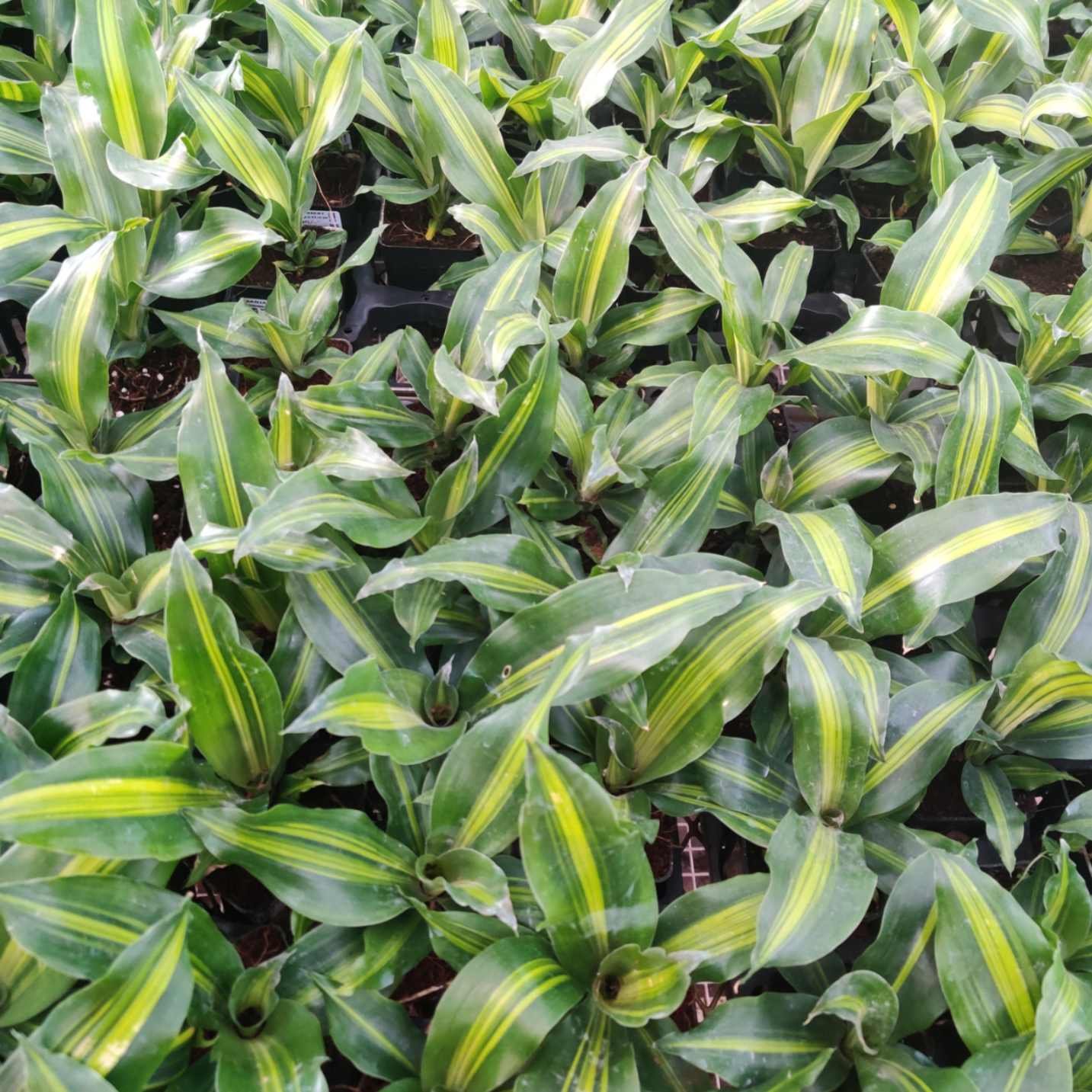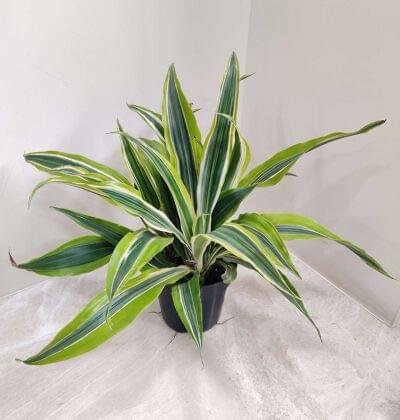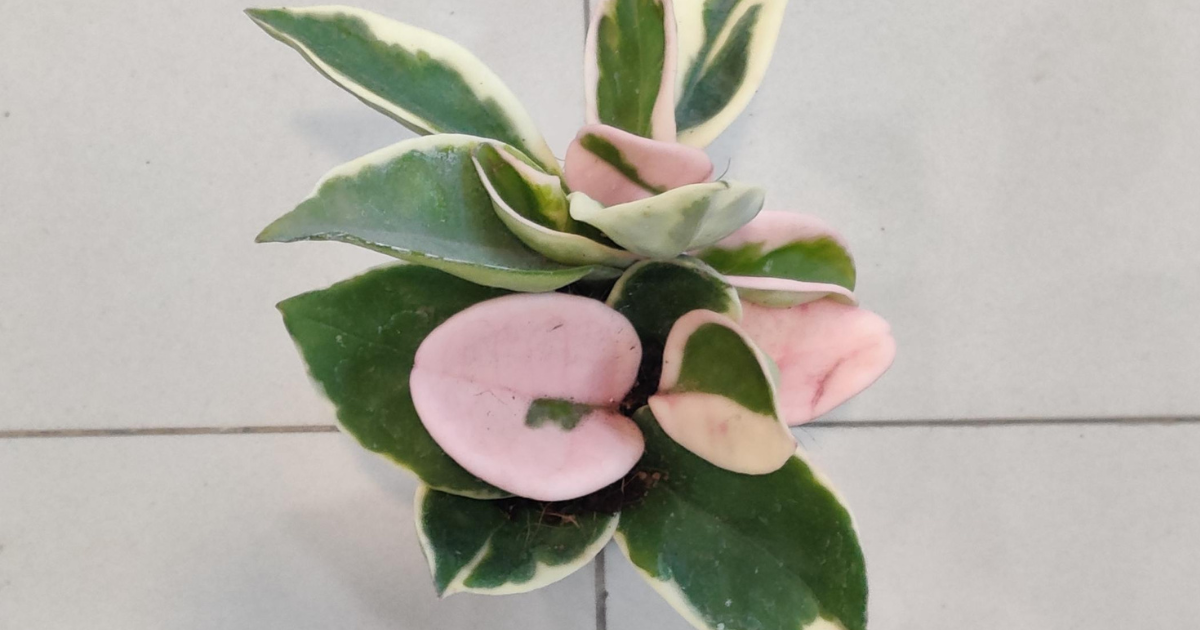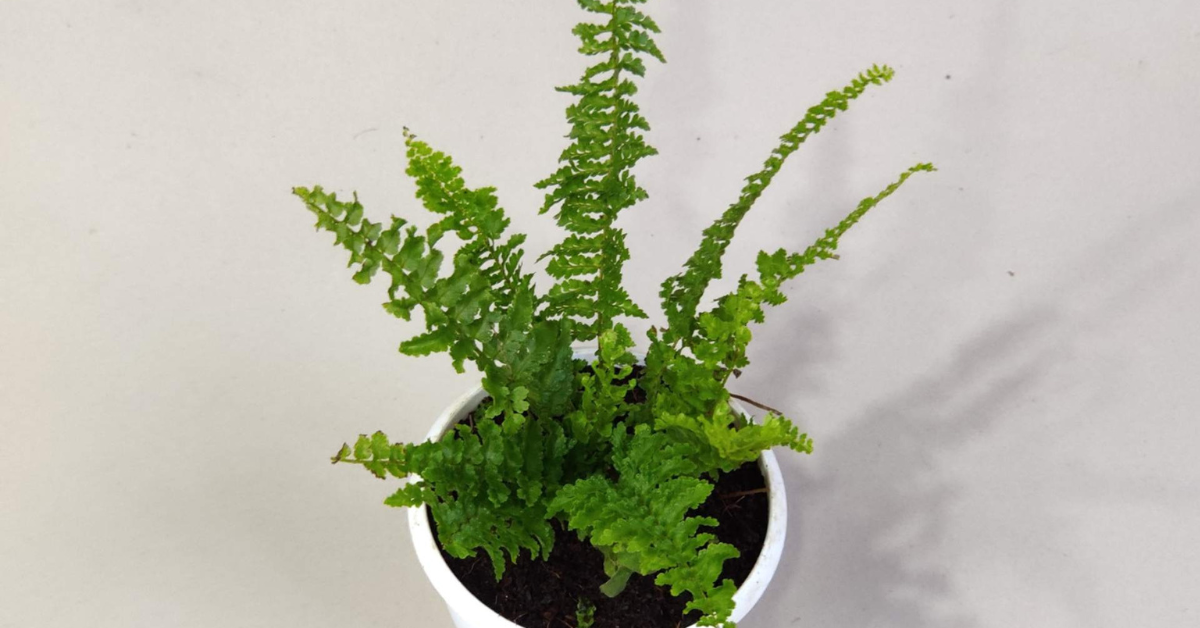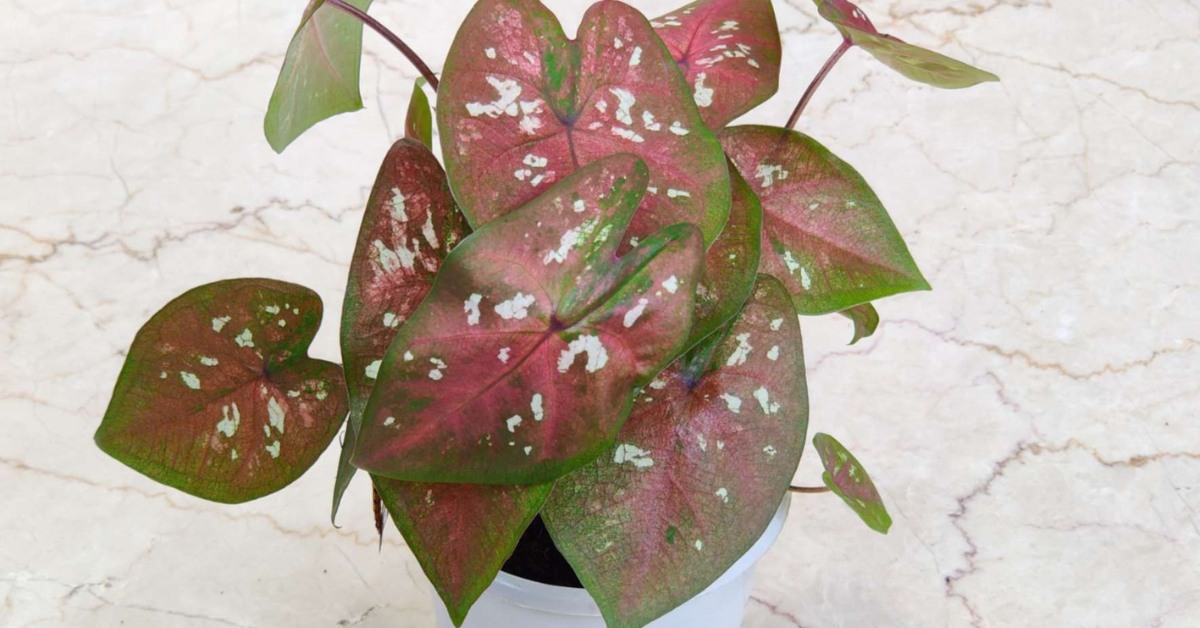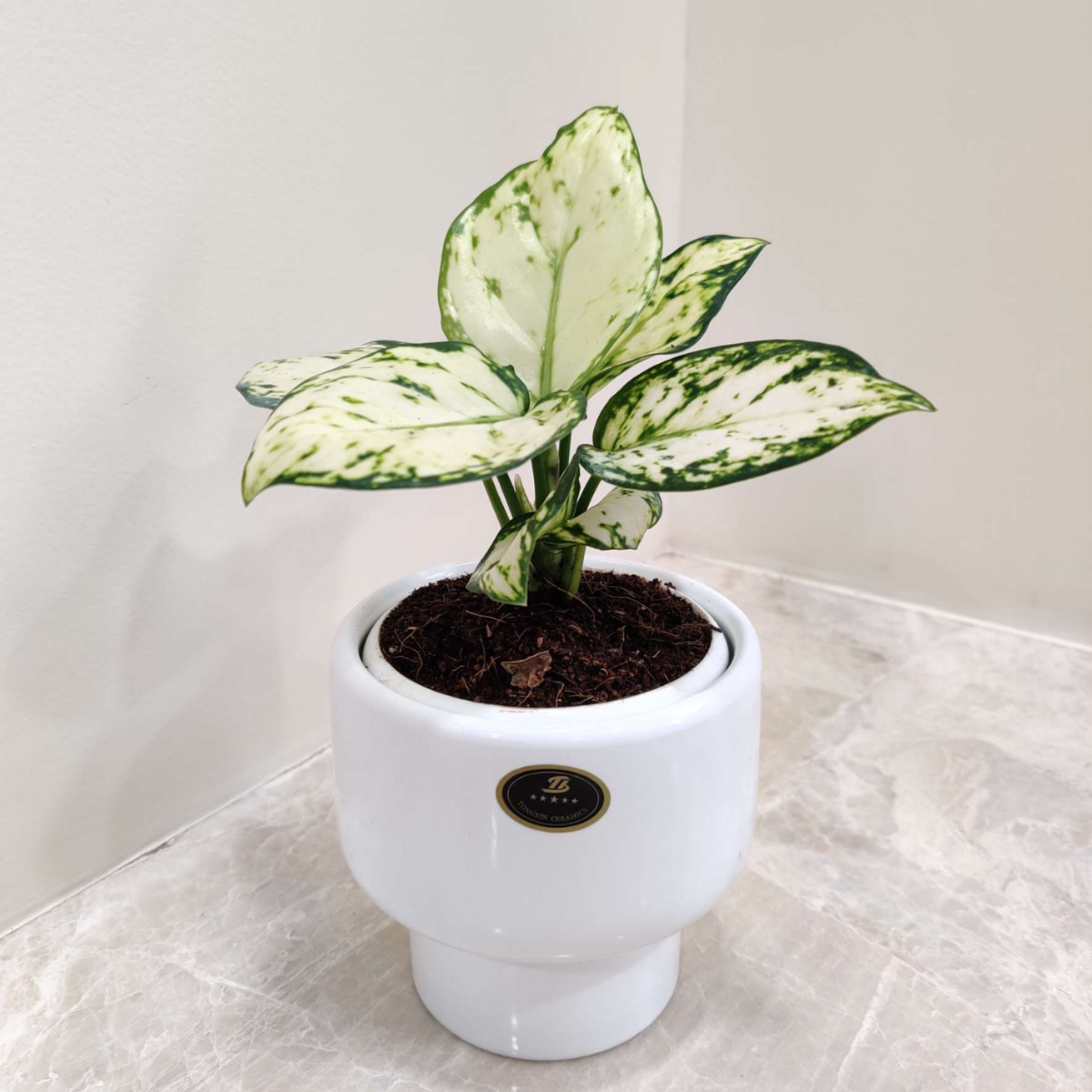Bringing the tropics indoors has never been easier than with the Corn Plant (Dracaena fragrans)—a resilient, stylish, and easy-care houseplant that has captured the hearts of plant lovers worldwide. Known for its tall, cane-like stems and lush, arching leaves that resemble maize, this ornamental plant is a favorite for both beginners and seasoned indoor gardeners.
Native to tropical Africa and islands of the Indian Ocean, the corn plant has been grown indoors since the mid-1800s. In the wild, it can reach an impressive 15 meters in height, while indoors, it usually matures to 4–6 feet, making it perfect for adding vertical greenery without overwhelming your space. With the right conditions, mature plants may even surprise you with clusters of sweetly fragrant, white flowers.
In this comprehensive guide, we’ll cover everything you need to know about corn plant care—from lighting, watering, and soil requirements to pruning, propagation, and troubleshooting common problems. Whether you’re just starting your indoor plant journey or looking to perfect your green thumb, this resource will help your Dracaena fragrans thrive.
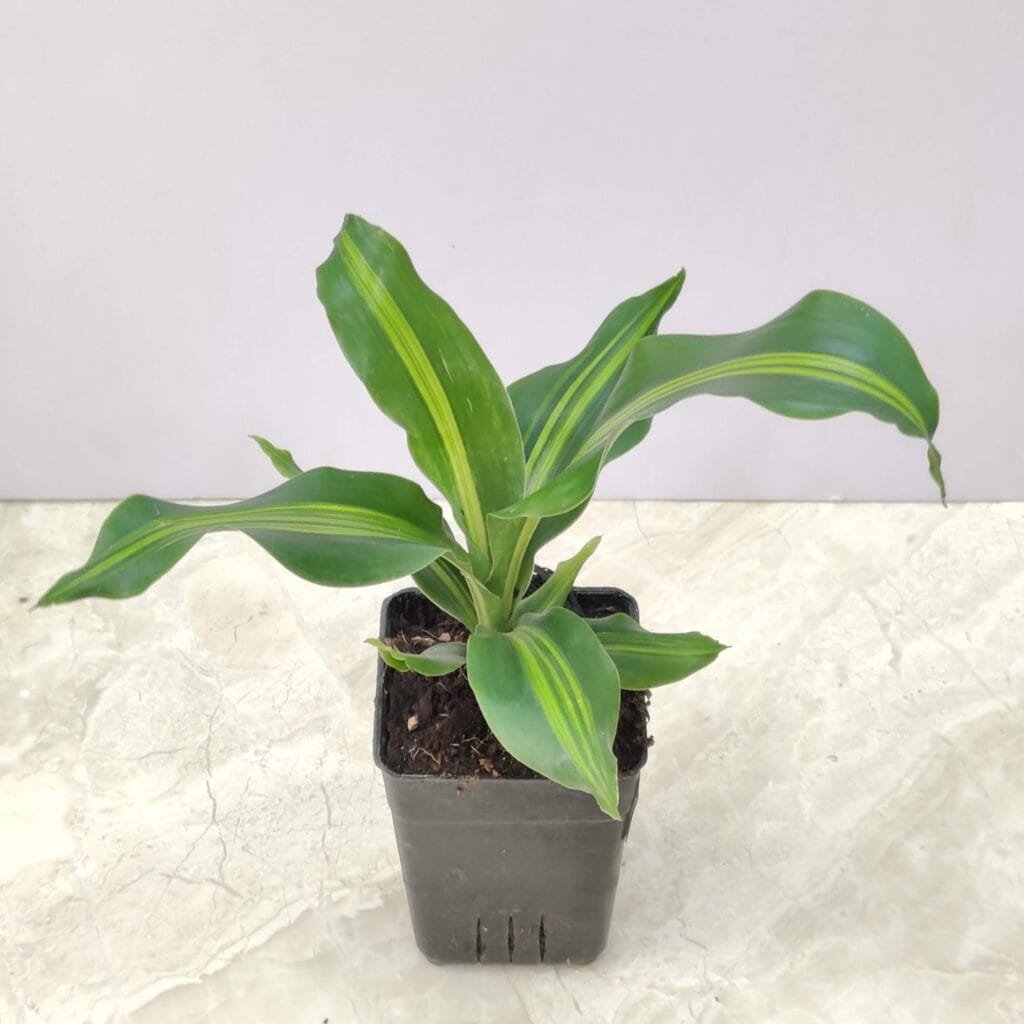
Corn Plant (Dracaena fragrans) Quick Facts
- Common Names: Corn plant, dracaena, false palm
- Botanical Name: Dracaena fragrans
- Family: Asparagaceae
- Plant Type: Broadleaf evergreen shrub/tree
- Mature Size: Outdoors: 15–50 ft tall, 3–10 ft wide; Indoors: up to 6 ft tall
- Sun Exposure: Partial sunlight (bright, indirect light indoors)
- Soil Type: Moist, well-draining, loamy soil
- Soil pH: Slightly acidic, 6.1 to 6.5
- Bloom Time: Late fall and late spring (nighttime blooms)
- Flower Color: White to yellow, fragrant
- Hardiness Zones: USDA Zones 10–12
- Native Area: Tropical Africa
- Toxicity: Toxic to cats and dogs if ingested
Why Choose a Corn Plant?
The corn plant (Dracaena fragrans) is often called a beginner’s dream houseplant—and for good reason. Unlike many fussy indoor plants that demand constant attention, the corn plant is adaptable, forgiving, and thrives in average household conditions. Here’s why it deserves a spot in your home or office:
1. Low Maintenance Care
Corn plants are perfect if you want greenery without the stress of complicated care routines. They tolerate infrequent watering, indirect light, and average humidity, making them ideal for busy people, frequent travelers, or anyone still building plant confidence.
2. Natural Air Purifier
Like other members of the Dracaena family, corn plants are listed among NASA’s top air-purifying plants. They help filter common indoor toxins such as formaldehyde, benzene, and trichloroethylene, often found in household cleaners, paints, and furniture finishes. This makes them not just decorative but also beneficial for indoor air quality.
3. Aesthetic & Architectural Appeal
With their tall, cane-like stems and long, arching leaves, corn plants bring a bold tropical statement to any room. They naturally grow upright, so they add vertical greenery without spreading out too wide—perfect for filling empty corners, framing doorways, or balancing modern interiors. Their glossy foliage and cane structure also make them look like living sculptures.
4. Versatile Placement
Whether you want a bathroom plant that thrives in humidity, a living room focal point, or a leafy accent in an office corner, corn plants adapt well to different spaces. They don’t require direct sun, so even moderately lit rooms can accommodate them. This flexibility makes them a decor favorite for both homes and workplaces.
5. Impressive Longevity
When given proper care, corn plants are incredibly resilient and can live for decades indoors. Many plant enthusiasts report passing down their Dracaenas like family heirlooms. Their slow to moderate growth also means they stay manageable in size, adding long-lasting greenery without frequent repotting.
Important Note for Pet Owners
While corn plants are non-toxic to humans, they are considered toxic to cats and dogs. The leaves contain compounds called saponins, which can cause vomiting, drooling, lack of appetite, and lethargy in pets if ingested. If you share your home with furry friends, it’s best to:
- Place the plant out of reach.
- Train pets to avoid nibbling leaves.
- Consider pet-safe alternatives if your animals are especially curious chewers.
The Essentials of Corn Plant Care
1. Light Requirements
Corn plants are adaptable, but light plays a crucial role in their growth and appearance.
- Ideal Condition: Bright, indirect light near a window with filtered sunlight.
- Too Much Light: Direct sunlight can scorch leaves, causing dry patches and streaks.
- Too Little Light: Leads to slower growth and loss of leaf variegation. Variegated types like Massangeana or Lemon Lime especially need more light to maintain their vibrant colors.
- Shady Corners: They can tolerate low-light conditions, making them suitable for offices and dim rooms, but growth will be slower.
Pro Tip: Rotate your plant every few weeks to encourage even growth.
2. Watering Schedule
One of the most common mistakes with corn plant care is overwatering.
- Frequency: Check soil weekly and water only when the top 1–2 inches are completely dry.
- Growing Season (Spring–Fall): Keep soil evenly moist but never soggy.
- Dormant Season (Winter): Reduce watering frequency as growth slows.
- Signs of Overwatering: Yellowing leaves, root rot, sudden leaf drop.
- Signs of Underwatering: Curling or crispy leaf tips.
Always drain excess water from the saucer to avoid soggy roots. Use distilled or filtered water if possible, since fluoride in tap water can cause leaf tip burn.
3. Temperature and Humidity
Since corn plants are native to tropical regions, they thrive in warm, humid conditions.
- Temperature: 60°F–75°F (15°C–24°C). Avoid temperatures below 55°F (13°C).
- Humidity: Prefers 40–50%.
- Low Humidity Symptoms: Browning leaf tips and edges.
- Solutions:
- Mist leaves every few days.
- Place on a pebble tray with water.
- Use a humidifier for consistent moisture.
- Bathrooms are excellent spots due to naturally higher humidity.
Keep plants away from heating vents, air conditioners, or cold drafts, as sudden temperature shifts cause drooping.
4. Soil and Fertilization
- Soil: Use a loose, well-draining potting mix rich in organic matter. Loamy soil blends are ideal.
- Drainage: Essential—roots rot quickly in waterlogged soil.
- Fertilizer: Feed monthly during spring and summer with a balanced liquid fertilizer. Skip fertilization in winter.
- Mineral Build-Up: Flush soil every few months by running water through the pot until it drains completely. This prevents fertilizer salts from causing leaf damage.
5. Repotting
Corn plants are slow growers and only need repotting every 2–3 years.
Signs it’s time to repot:
- Roots growing out of drainage holes.
- Soil dries too quickly after watering.
- Plant appears rootbound or stunted.
Repotting steps:
- Select a pot 2–3 inches larger in diameter.
- Add fresh soil at the bottom.
- Place plant upright in the new pot.
- Fill sides with potting mix without packing too tightly.
- Water thoroughly and allow excess to drain.
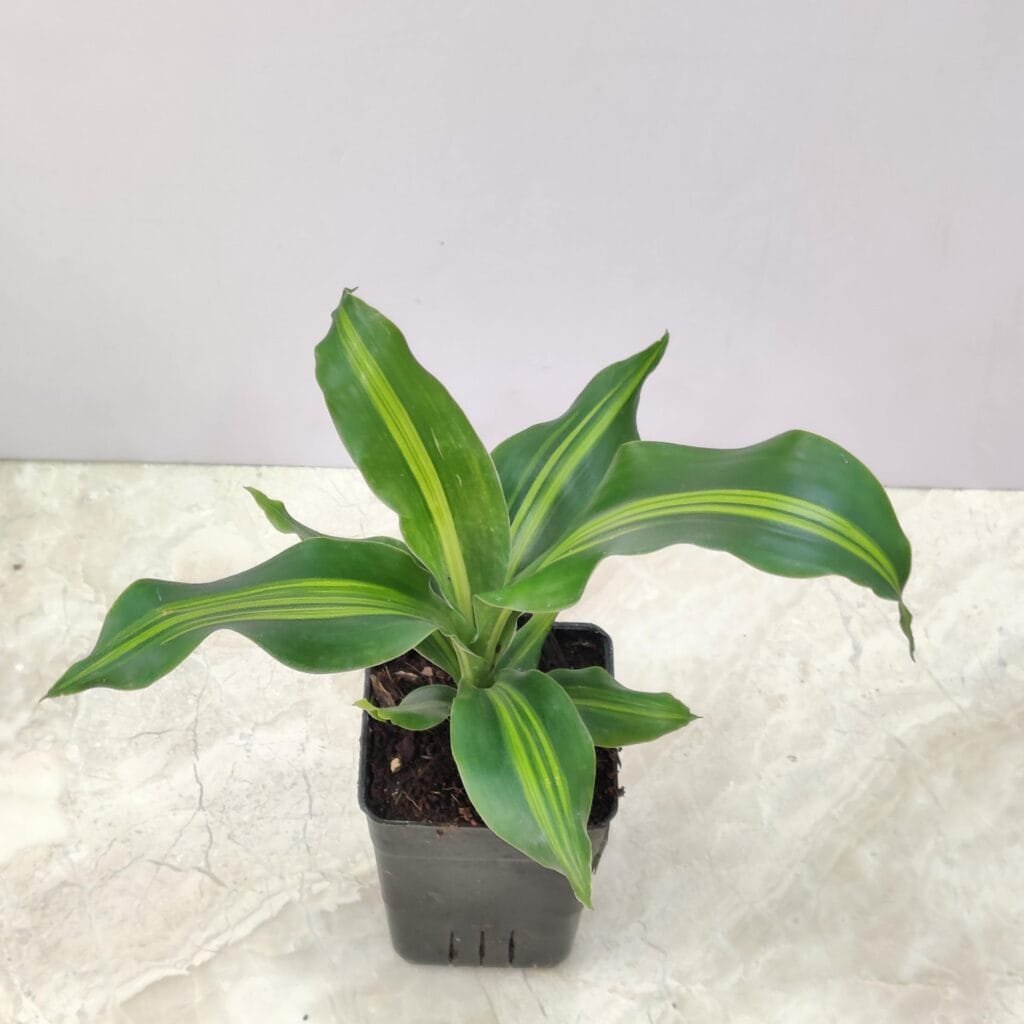
Growth, Maintenance & Propagation
Pruning
Minimal pruning is required.
- Remove yellow or dead leaves.
- Trim cane tops if the plant becomes too tall.
- Cutting encourages branching and bushier growth.
Propagation
The corn plant is easy to propagate, especially from stem or top cuttings.
Steps for water propagation:
- Cut an 8-inch stem or snip the top just below the leaf line.
- Place cutting in a jar of room-temperature water.
- Keep in a warm spot with indirect light.
- Replace water every 1–2 weeks.
- Once roots reach 1 inch, transfer to potting soil.
Water propagation is favored because root growth is visible.
Blooming
Though rare indoors, mature plants (over 5 years old) may bloom under ideal conditions.
- Flowers: White, ball-like clusters on long stalks.
- Fragrance: Sweet, a mix of jasmine, lilac, honey, and freshly cut grass.
- Timing: Typically blooms at night for a month.
Common Problems & Solutions in Corn Plant Care
Even though the corn plant (Dracaena fragrans) is considered a hardy and low-maintenance houseplant, it may still develop issues if its needs are not met. The good news? Most problems can be identified early and corrected with the right care adjustments.
1. Yellow Leaves
Cause: Usually a sign of overwatering or sometimes a nutrient deficiency.
Symptoms: Lower leaves start yellowing first, progressing upward. The soil may feel consistently damp, or roots could be sitting in water.
Solution:
- Allow the soil to dry before watering again.
- Ensure the pot has drainage holes.
- If nutrient deficiency is suspected, feed with a balanced liquid fertilizer during the growing season.
2. Brown Leaf Tips and Edges
Cause: Typically from low humidity, dry air, or overfertilization. Excess fluoride or chlorine in tap water can also burn leaf tips.
Symptoms: Crisp, brown tips on otherwise healthy green leaves.
Solution:
- Increase humidity with misting, pebble trays, or a humidifier.
- Use filtered or distilled water instead of tap water.
- Reduce fertilizer frequency and flush soil to remove excess salts.
3. Curling Leaves
Cause: Usually linked to irregular watering (too much or too little), or mineral build-up from tap water.
Symptoms: Leaves begin to curl inward or twist unnaturally.
Solution:
- Maintain a consistent watering routine—water when the top 1–2 inches of soil are dry.
- Leach soil every few months to wash out excess minerals.
- Switch to rainwater or distilled water if mineral build-up persists.
4. Drooping Leaves
Cause: Can happen from temperature stress, root rot, or dehydration.
Symptoms: Leaves hang limply instead of arching naturally. In root rot cases, stems may feel mushy at the base.
Solution:
- Keep plant in stable temperatures (60°F–75°F).
- Check roots: if they are black or mushy, trim them and repot in fresh soil.
- If soil is too dry, water thoroughly and monitor recovery.
5. Sudden Leaf Drop
Cause: Commonly from overwatering and poor drainage.
Symptoms: Healthy-looking leaves suddenly fall off the plant without much warning.
Solution:
- Empty saucers after watering to prevent standing water.
- Improve drainage by adding perlite or sand to soil mix.
- Cut back watering frequency and let the soil dry between waterings.
6. Dry Patches on Leaves
Cause: Sunburn from direct sunlight exposure.
Symptoms: Light brown, dry, or bleached spots on leaves.
Solution:
- Move plant to a spot with bright but indirect light.
- Avoid placing it near hot, sun-facing windows without sheer curtains.
7. Foul Smell or Blackened Stem Base
Cause: Bacterial soft rot—a serious infection often caused by prolonged overwatering.
Symptoms: A foul odor from the soil, blackened or mushy cane bases, rapid decline of the plant.
Solution:
- Unfortunately, soft rot is not curable. The infected plant should be discarded to prevent spread.
- If some healthy stems remain, try propagating cuttings to save parts of the plant.
Varieties of Corn Plant
Several cultivars of Dracaena fragrans exist, offering unique leaf patterns:
- Massangeana – Most popular; yellow-green stripe down center.
- Lindenii – Green leaves with yellow edges.
- Victoria – Compact with triangular leaves and yellow stripe (rare).
- Lemon Lime – Bright, striped green-and-yellow foliage.
- Limelight – Glossy chartreuse-green leaves.
- Mick, Nick & Rick – Nick has cream edges, Rick has deep green rounder leaves, Mick is slim-leaved.
Styling Tips for Corn Plant (Dracaena fragrans)
The corn plant (Dracaena fragrans) isn’t just easy to care for—it’s also a stunning decorative element for your home. Pairing it with the right ceramic pot can enhance its tropical charm and help it blend seamlessly into your interior design. Here are five simple yet effective styling ideas:
- Choose a Complementary Pot Color
Ceramic pots are available in a wide range of colors. Opt for neutral white or earthy tones for a clean, minimalist look, or pick a bold shade to make your Dracaena fragrans stand out as a statement piece. - Raise the Pot for Extra Flair
Use a wooden or metal plant stand to elevate your corn plant. This adds height, visual interest, and a modern touch, especially in contemporary living spaces. - Create Plant Groupings
Style your corn plant with other indoor plants of varying heights and foliage textures. While groupings add depth and greenery to a room, be sure to give your Dracaena space to grow tall and upright. - Location Matters
Place your corn plant in a spot with bright, indirect sunlight to maintain vibrant foliage and healthy growth. Rotate the pot regularly to encourage even leaf development, and avoid direct sunlight that can scorch the leaves. - Surface Dressing for a Polished Look
Add decorative pebbles, moss, or stones on top of the soil inside the ceramic pot. This not only elevates the visual appeal but also helps retain soil moisture. Just ensure the pot’s drainage holes remain clear for healthy root growth.
With these styling tips, your Dracaena fragrans corn plant in a ceramic pot becomes more than a houseplant—it transforms into a beautiful, low-maintenance design feature that elevates your home decor.
Final Tips for Beginners
- Place in bright, indirect light for best growth.
- Let soil dry between waterings.
- Increase humidity in dry environments.
- Repot only when rootbound.
- Use distilled or filtered water to prevent leaf burn.
- Keep out of reach of pets.
With these practices, your corn plant will thrive and become a long-lasting, tropical centerpiece in your home.
Wrapping Up: Easy Corn Plant Care
Most corn plant (Dracaena fragrans) problems—like yellow leaves, brown tips, curling, or drooping—come from simple care mistakes such as overwatering, low humidity, or too much direct sunlight. Luckily, these issues are easy to fix by adjusting watering, improving humidity, and providing bright, indirect light.
Stay consistent, watch for early signs of stress, and your indoor corn plant will thrive as a low-maintenance, air-purifying tropical beauty for years to come.
FAQs
1. Are corn plants easy to care for?
Yes! They are among the most forgiving houseplants, perfect for beginners.
2. What’s the best light for corn plants?
Bright, indirect light. Avoid harsh sun but don’t keep them in deep shade long-term.
3. How often should I water my corn plant?
Once the top 1–2 inches of soil are dry—typically every 1–2 weeks depending on conditions.
4. Why are my corn plant’s leaves turning yellow?
Likely overwatering, poor drainage, or nutrient deficiency. Adjust watering and check soil health.
5. Can corn plants grow in bathrooms?
Yes! They love humidity, making bathrooms an excellent location.
6. Do corn plants bloom indoors?
Rarely, but mature plants may bloom, producing fragrant white flowers.
7. How often should I repot my corn plant?
Every 2–3 years, or when roots outgrow the pot.
8. Are corn plants toxic to pets?
Yes. Keep them away from cats and dogs.
9. What causes brown tips on leaves?
Usually dry air, overfertilization, or tap water fluoride. Switch to distilled water and increase humidity.
10. Can I propagate a corn plant in water?
Absolutely! Water propagation is one of the easiest methods.

